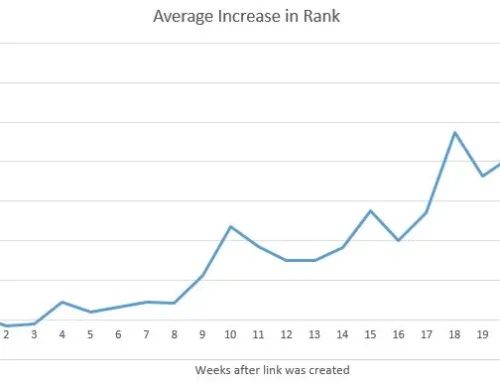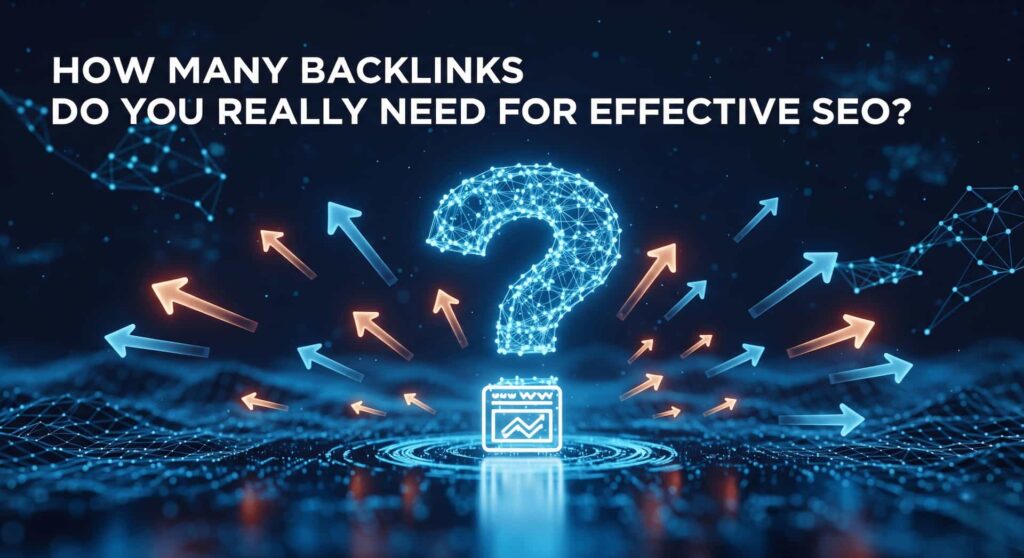
It’s the question I hear all the time, and one I used to worry a lot about myself: “So, how many backlinks do I actually need to rank?”
I completely understand. We all know that backlinks are important, and everyone wants to be on the first page of Google. It’s easy to think that there is a certain number that will always get you the best ratings. But after years of working with SEO, I can say there isn’t one.
It’s not a good idea to focus on a number. Let’s talk about what’s really important.
The quality vs. quantity
A long time ago, SEO techniques were mostly centered on numbers. People got thousands of bad links from a lot of different places. But Google is a lot smarter now. One high-quality backlink from a reputable website is worth more than a thousand spammy links. In fact, getting a lot of low-quality connections hurts your website and might get you in trouble. When you question, “How many backlinks are good?” the answer is always about how relevant they are and how trustworthy the site is.
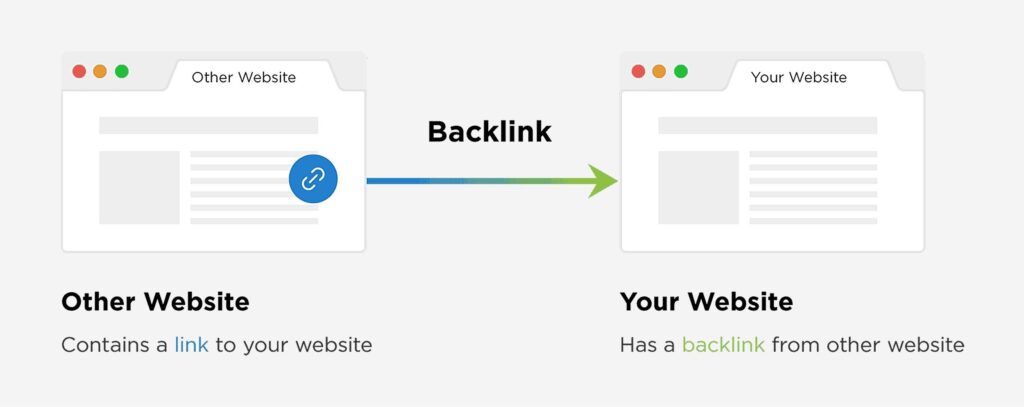
A backlink from a website that has high authority for a certain topic tells Google that your content belongs to this useful ecosystem. Google’s Search Advocate, John Mueller, said:
“The total number [of backlinks] essentially is completely irrelevant.”
He explained that a link from a major, relevant resource is a far more important signal to Google than millions of weak ones. So, always remember this rule: quality and relevance are everything.
What a high-quality backlink looks like to me
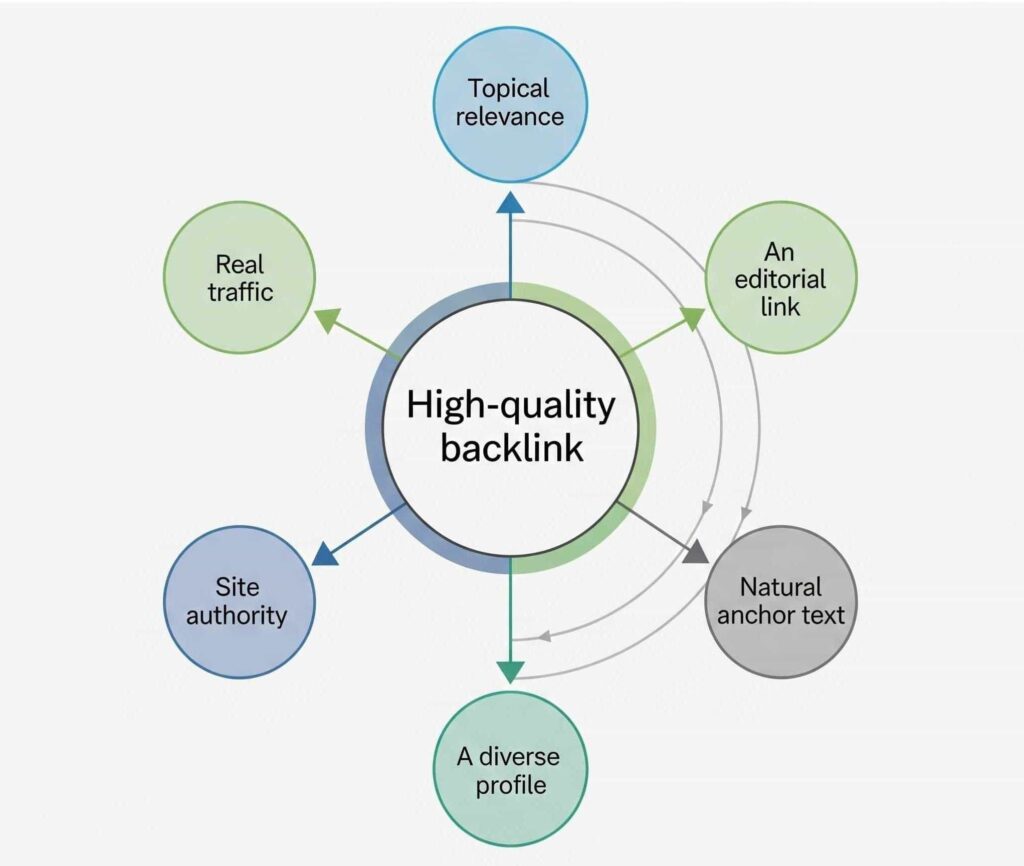
So, what makes a backlink high-quality? When I check a link, I look at several factors. Here’s what I consider:
- Topical relevance: If I have a fitness blog, I want links from other health, wellness, or sports blogs, not a blog about fixing cars. A link to something comparable proves that my site knows what it’s talking about.
- Real traffic: If a page already gets organic traffic from Google, a link from that page is a strong sign of trust. Google recognizes this page is real, and it gives me that reputation.
- An editorial link: The link’s location on the page is important. A link that is naturally placed in the main body of an article is a real suggestion. Links that are concealed in footers or sidebars don’t mean anything.
- Site authority: I consider a site’s overall trust score, using Domain Rating (DR).
- Natural anchor text: The clickable text of a link should make sense to a human reader. A profile full of keyword-stuffed anchor text is a huge red flag for Google. I use a natural combination of brand terms, partial keywords, and non-template anchors.
- A diverse profile: One hundred links from 100 different good websites are much better than 100 links from one website.
What’s the right number for you?
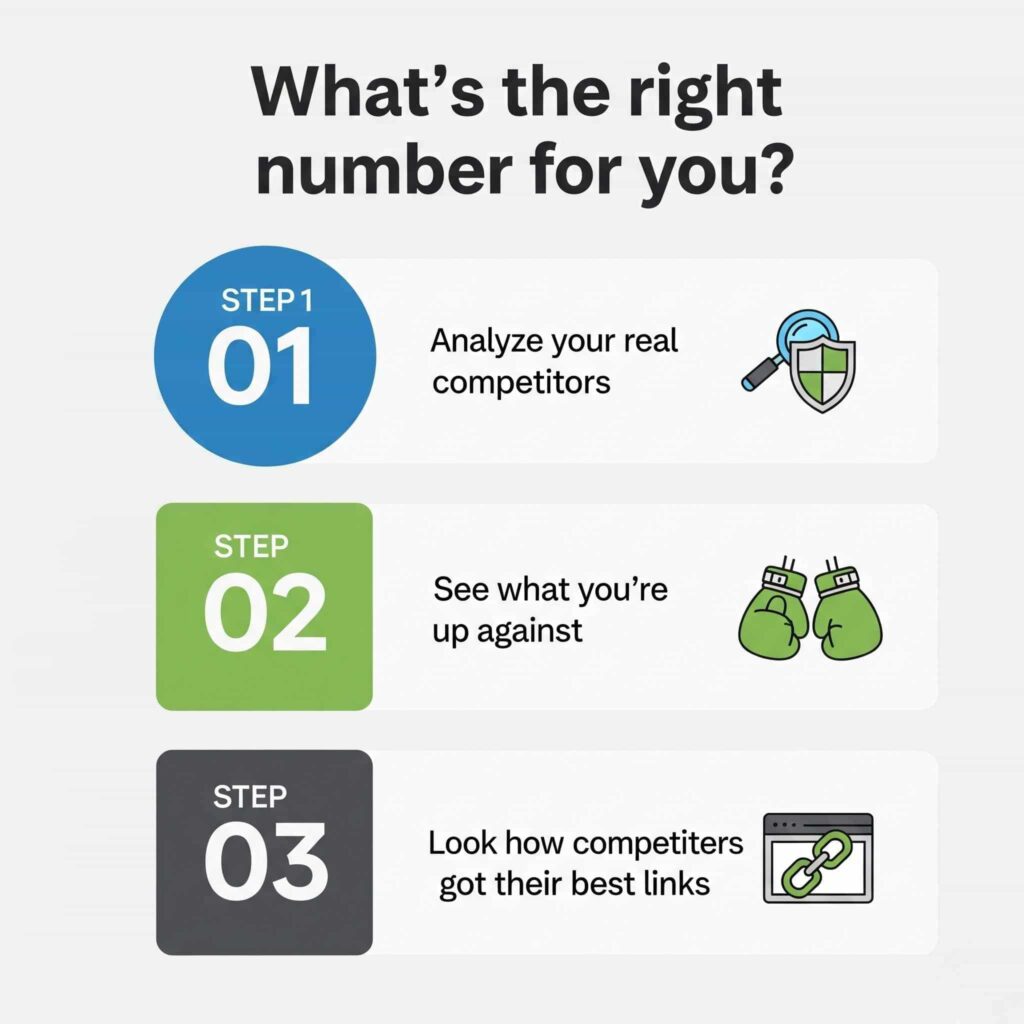
Instead of shooting for a random number, I focus on a smart strategy. Here’s a simple approach you can use too.
Step 1. Analyze your real competitors
First, find out who’s ranking in the top 3-5 spots for your target keyword. For SEO, your competitors are any page ranking for your target keyword. These pages have convinced Google that they are trustworthy, and their backlink profiles provide a clear guide.
Step 2. See what you’re up against
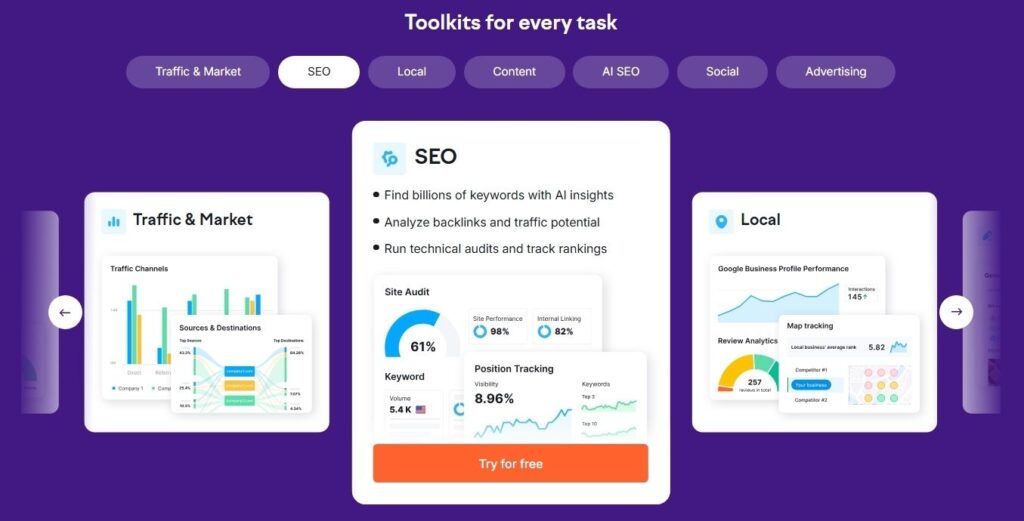
I use SEO tools like Ahrefs or Semrush to see how many different websites link to the top-ranking pages. This helps to set a realistic goal for the number of backlinks you may need. For example, if the top pages have 50-70 domains linking to them, then that is the range you should aim for. This way, you get an answer based on real data for your keyword.
Step 3. Look deeper than the numbers
I dig into how my competitors got their best links:
- Are they getting mentioned in the news (digital PR)?
- Are they writing guest posts for major industry blogs?
- Did they create a data study that everyone is citing?
This research shows me which methods work and how many backlinks are enough to compete and helps shape my own strategy.
How I get links from trusted websites
Here’s what works for me:
- Digital PR & Outreach: I create content that others want to link to, such as research with real data or interesting infographics that journalists and bloggers find useful. Then I contact them and explain how my content can help their readers. Not every message gets a response, but when it does, it leads to a link.
- Strategic guest posting remains one of the most effective ways to earn high-quality links, but the standards have become higher. I look for well-respected blogs in my field that demonstrate expertise and credibility. Then, I offer them high-value content I’d be proud to publish on my own site. If you write a guest post, make it count.
- Broken link building: I find a broken link on a page with useful resources and politely contact the site owner. I let them know about the dead link (which helps them) and suggest my own content as a replacement. It’s helpful, and it works.
- Reclaiming unlinked mentions: People sometimes mention my brand but forget to add a link. I use tools like Google Alerts to track these mentions. Then, I sent an email asking for the link.
The bottom line
How many backlinks should you have?
The real answer is to quit worrying so much about a certain number.
It’s not enough to get a set amount of backlinks; you need to establish a robust, diverse, and high-quality backlink profile. Instead of asking how many links you need, ask what value you can offer to get them. This means you need to change the way you think about links:
- From just counting them to judging how good and useful they are.
- From making relationships to getting links from other websites.
- From improving a website to becoming an expert in your field.
If you make that your aim, the correct rankings and traffic will come.
Frequently asked questions
How many backlinks can I safely make per day or month?
It depends on how big, old, and where your website is. A big, popular site might gain 20 to 50 links every day, but a startup firm should try to get links at a slower, steadier rate.
Are “nofollow” links bad for SEO?
No. They can still send people who are interested to your site, make your brand more visible, and help you build a link profile that looks natural.
Is it okay to buy backlinks?
Yes. But you need to know what you’re buying. You should never buy inexpensive connections from a list you find on the internet. Instead, use a professional agency that earns you links by reaching out to real people.


